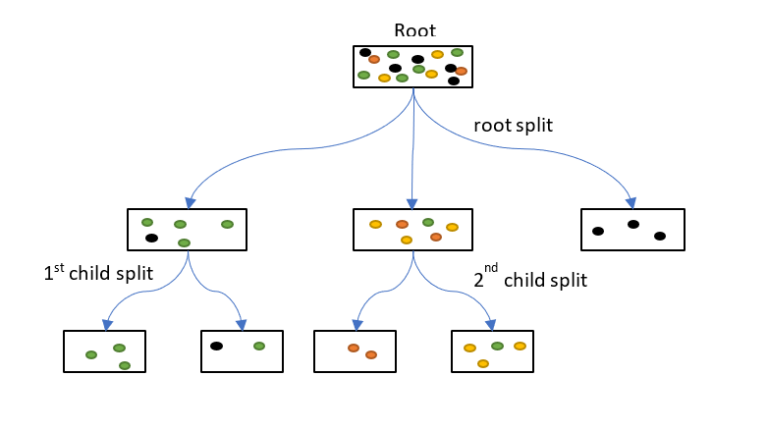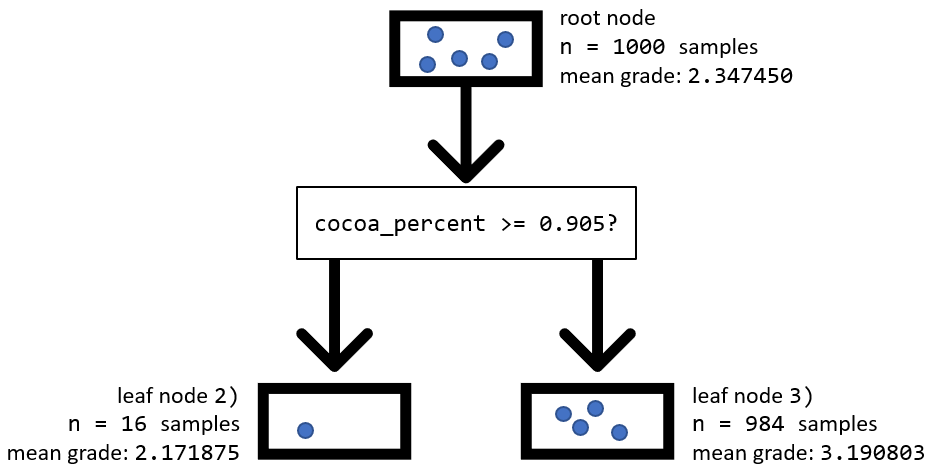Continuous outcomes
Machine Learning with Tree-Based Models in R

Sandro Raabe
Data Scientist
The dataset
head(chocolate, 5)
final_grade review_date cocoa_percent company_location bean_type broad_bean_origin
<dbl> <int> <dbl> <fct> <fct> <fct>
3 2009 0.8 U.K. "Criollo, Trinitario" "Madagascar"
3.75 2012 0.7 Guatemala "Trinitario" "Madagascar"
2.75 2009 0.75 Colombia "Forastero (Nacional)" "Colombia"
3.5 2014 0.74 Zealand "" "Papua New Guinea"
3.75 2011 0.72 Australia "" "Bolivia"
Construct the regression tree
spec <- decision_tree() %>%set_mode("regression") %>%set_engine("rpart")print(spec)
Decision Tree Model Specification
(regression)
Computational engine: rpart
model <- spec %>% fit(formula = final_grade ~ .,data = chocolate_train)print(model)
parsnip model object
Fit time: 20ms
n= 1437
node), split, n, deviance, yval
* denotes terminal node
Predictions using a regression tree
# Model predictions on new data
predict(model, new_data = chocolate_test)
.pred
<dbl>
3.281915
3.435234
3.281915
3.833931
3.281915
3.514151
3.273864
3.514151
Divide & conquer

Hyperparameters
Goal for regression trees:
- Low variance or deviation from the mean within groups
Design decisions:
min_n: number of data points in a node needed for further split (default: 20)tree_depth: maximum depth of a tree (default: 30)cost_complexity: penalty for complexity (default: 0.01)
Set them in very first step:
decision_tree(tree_depth = 4, cost_complexity = 0.05) %>%
set_mode("regression")
Understanding model output
decision_tree(tree_depth = 1) %>%
set_mode("regression") %>%
set_engine("rpart") %>%
fit(formula = final_grade ~ .,
data = chocolate_train)
parsnip model object
Fit time: 1ms
n= 1000
node), split, n, yval
1) root 1000 2.347450
2) cocoa_percent>=0.905 16 2.171875 *
3) cocoa_percent<0.905 984 3.190803 *
- Model with
tree_depth = 1
- Visualization:

Let's do regression!
Machine Learning with Tree-Based Models in R

